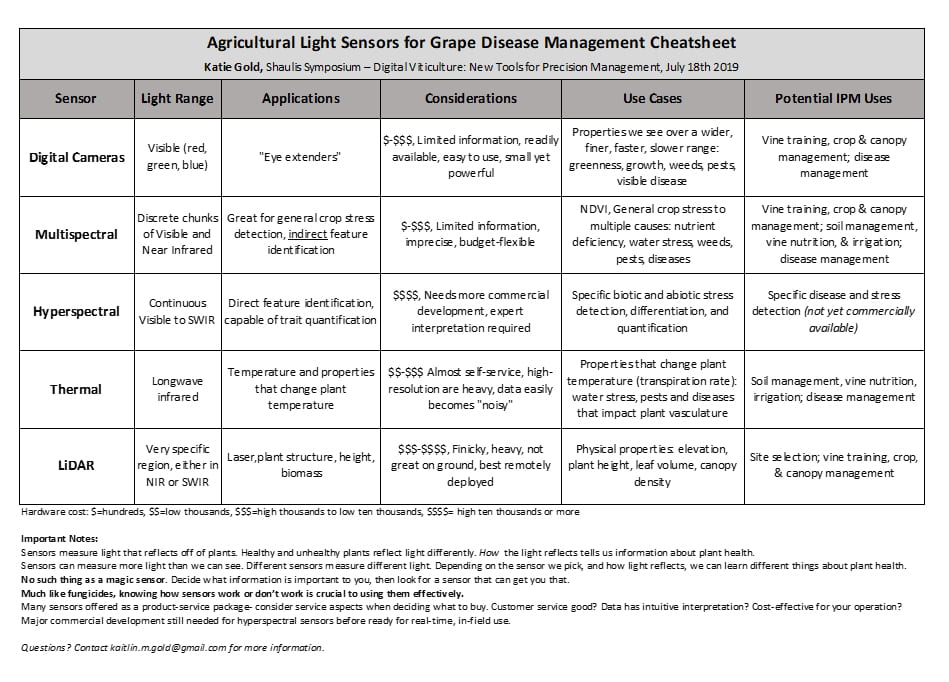What are light sensors? What can they do? What can’t they do?
Grape growers around the country are facing increased pressures to reduce spending while increasing profits, reduce inputs while increasing productivity, and reduce labor reliance while increasing harvest quality. With changing environments, evolving pathogens, and more restricted control options, effective disease management is of ever increasing and growing concern. Digital agriculture, the use of new and advanced technologies, integrated into one system, to enable farmers and other stakeholders within the agriculture value chain to improve food production, offers a path forward for grape growers to achieve their business and environmental sustainability goals in tandem. The use of agricultural light sensors in precision vineyard management has the potential to increase vineyard productivity and sustainability while reducing unnecessary spending by helping growers prescriptively distribute resources to areas most in need. This talk focused on the five most common types of agricultural light sensors and their various applications, considerations, and general uses in vineyard IPM.
Important Takeaways
- Sensors measure light that reflects off of plants. Healthy and unhealthy plants reflect light differently. How the light reflects tells us information about plant health.
- Sensors can measure more light than we can see. Different sensors measure different light. Depending on the sensor we pick, and how the light reflects, we can learn different things about plant health.
- There is no such thing as a magic sensor. Decide what information is important to you, then look for a sensor that can get you that.
- Much like fungicides, knowing how sensors work or don’t work is crucial to using them effectively.
- Many sensors offered as a product-service package- encourage stakeholders to consider service aspects when deciding what to buy. Customer service good? Data has intuitive interpretation? Cost-effective for your operation?
- Major commercial development still needed for hyperspectral sensors before ready for real-time, in-field use.


